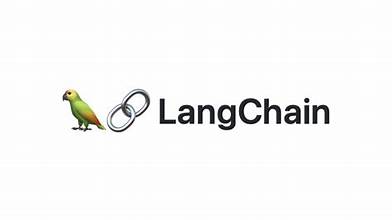
Course content
- Course Overview
- ammoth Interactive Courses Introduction
- Introduction to Python (Prerequisite)
- Build a Chatbot w Natural Language Processing from FAQ
- Build a Context Aware Chatbot




14 hours (usually 2 days including breaks)
Audience
TextBlob is a Python NLP library for processing textual data. It provides a simple API that makes it easy to perform NLP tasks, such as part-of-speech tagging, noun phrase extraction, sentiment analysis, classification, translation, etc.
This instructor-led, live training (online or onsite) is aimed at data scientists and developers who wish to use TextBlob to implement and simplify NLP tasks, such as sentiment analysis, spelling corrections, text classification modeling, etc.
By the end of this training, participants will be able to:
Format of the Course
Course Customization Options
Introduction
Getting Started
Building Text Classification Models
Performing NLP Tasks using TextBlob
APIs and Advanced Implementations
Troubleshooting
Summary and Next Steps

14 hours (usually 2 days including breaks)
Audience
Spark NLP is an open source library, built on Apache Spark, for natural language processing with Python, Java, and Scala. It is widely used for enterprise and industry verticals, such as healthcare, finance, life science, and recruiting.
This instructor-led, live training (online or onsite) is aimed at data scientists and developers who wish to use Spark NLP, built on top of Apache Spark, to develop, implement, and scale natural language text processing models and pipelines.
By the end of this training, participants will be able to:
Format of the Course
Course Customization Options
Introduction
Getting Started
Using Pre-trained Pipelines
Building NLP Pipelines
Classification and Inference
Troubleshooting
Summary and Next Steps

14 hours (usually 2 days including breaks)
Audience
This instructor-led, live training (online or onsite) is aimed at developers and data scientists who wish to use spaCy to process very large volumes of text to find patterns and gain insights.
By the end of this training, participants will be able to:
Format of the Course
Course Customization Options
Introduction
Installing spaCy
spaCy Components
Overview of spaCy Features and Syntax
Understanding spaCy Modeling
Using the SpaCy Command Line Interface (CLI)
Creating a Simple Application to Predict Behavior
Training a New Statistical Model
Loading the Model
Saving the Model
Providing Feedback to the Model
Updating the Model
Developing a Generalized Theory for Expected Outcomes
Case Study
Refining the Training Data
Other Training Styles
Using spaCy to Pre-process Text for Deep Learning
Integrating spaCy with Legacy Applications
Testing and Debugging the spaCy Model
Deploying the Model to Production
Monitoring and Adjusting the Model
Troubleshooting
Summary and Conclusion

21 hours (usually 3 days including breaks)
Knowledge and awareness of NLP principals and an appreciation of AI application in business
This classroom based training session will explore NLP techniques in conjunction with the application of AI and Robotics in business. Delegates will undertake computer based examples and case study solving exercises using Python
Detailed training outline

35 hours (usually 5 days including breaks)
There are no specific requirements needed to attend this course.
By the end of the training the delegates are expected to be sufficiently equipped with the essential python concepts and should be able to sufficiently use NLTK to implement most of the NLP and ML based operations. The training is aimed at giving not just an executional knowledge but also the logical and operational knowledge of the technology therein.
Introduction
1 – Installing Python
2 – Numbers
3 – Strings
4 – Slicing up Strings
5 – Lists
6 – Installing PyCharm
Conditional Statements
7 – if elif else
Iterations
8 – for
9 – Range and While
10 – Comments and Break
11 – Continue
Functions
12 – Functions
13 – Return Values
14 – Default Values for Arguments
15 – Variable Scope
16 – Keyword Arguments
17 – Flexible Number of Arguments
18 – Unpacking Arguments
19 – My trip to Walmart and Sets
20 – Dictionary
21 – Modules
Playing with Requests and Files
22 – Download an Image from the Web
23 – How to Read and Write Files
24 – Downloading Files from the Web
Exceptions
28 – Exceptions
Object Oriented Programs
29 – Classes and Objects
30 – init
31 – Class vs Instance Variables
32 – Inheritance
33 – Multiple Inheritance
34 – threading
Playing around with Python
35 – Unpack List or Tuples
36 – Zip (and yeast infection story)
37 – Lamdba
38 – Min, Max, and Sorting Dictionaries
39 – Pillow
40 – Cropping Images
41 – Combine Images Together
42 – Getting Individual Channels
43 – Awesome Merge Effect
44 – Basic Transformations
45 – Modes and Filters
46 – struct
47 – map
48 – Bitwise Operators
49 – Finding Largest or Smallest Items
50 – Dictionary Calculations
51 – Finding Most Frequent Items
52 – Dictionary Multiple Key Sort
53 – Sorting Custom Objects
Add Ons:
54 – Database Connectivity and Querying for MySQL
55 – Quick look into Regular Expressions
56 – Playing around with REST API
Writing a Web Crawler
Introduction to NLP (examples in Python of course)
NLP in Python in examples

21 hours (usually 3 days including breaks)
This course is aimed at developers and data scientists who wish to understand and implement AI within their applications. Special focus is given to Data Analysis, Distributed AI and NLP.
21 hours (usually 3 days including breaks)
No background in NLP is required.
Required: Familiarity with any programming language (Java, Python, PHP, VBA, etc…).
Expected: Reasonable maths skills (A-level standard), especially in probability, statistics and calculus.
Beneficial: Familiarity with regular expressions.
This course has been designed for people interested in extracting meaning from written English text, though the knowledge can be applied to other human languages as well.
The course will cover how to make use of text written by humans, such as blog posts, tweets, etc…
For example, an analyst can set up an algorithm which will reach a conclusion automatically based on extensive data source.